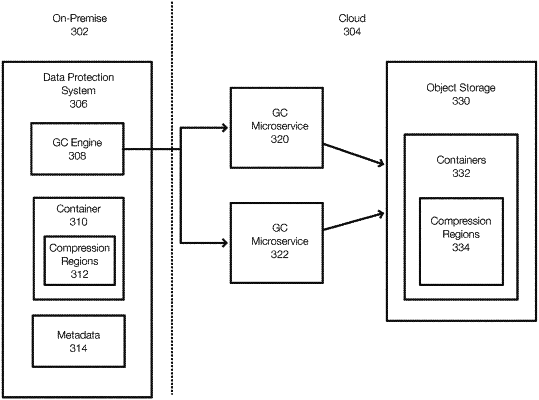| CPC G06F 12/0253 (2013.01) [G06F 3/0608 (2013.01); G06F 3/0652 (2013.01); G06F 3/067 (2013.01)] | 19 Claims |

|
1. In a computing system that provides an active tier of data and a cloud tier of data, a method for performing a garbage collection operation in the cloud tier, the method comprising:
processing metadata stored in the active tier for the cloud tier by a garbage collection engine at an on-premise system associated with the active tier to identify containers in the cloud tier to be cleaned, wherein the identified containers contain compression regions, wherein at least some of the compression regions include both dead segments and live segments that are encrypted;
generating recipes from the metadata stored at the active tier that identify locations of the live segments and of the dead segments in the compression regions in the identified containers stored in the cloud tier;
initiating, by the garbage collection engine, a microservice in a cloud;
sending the recipes from the garbage collection engine operating at the on-premise system to the microservice operating in a cloud;
performing the recipes by the microservice, wherein the microservice exits after the garbage collection operation ends, wherein the microservice:
decrypts the compression regions in the identified containers including the compression regions that include both dead segments and live segments, and copies only the live segments to compression regions in new containers from the identified containers;
encrypts the live segments in the compression regions in the new containers; and
deletes the identified containers after the recipes have been performed to free storage space used by the identified containers;
copying metadata corresponding to the recipes into a new metadata container at the active tier and replicating the new metadata container to the cloud tier.
|